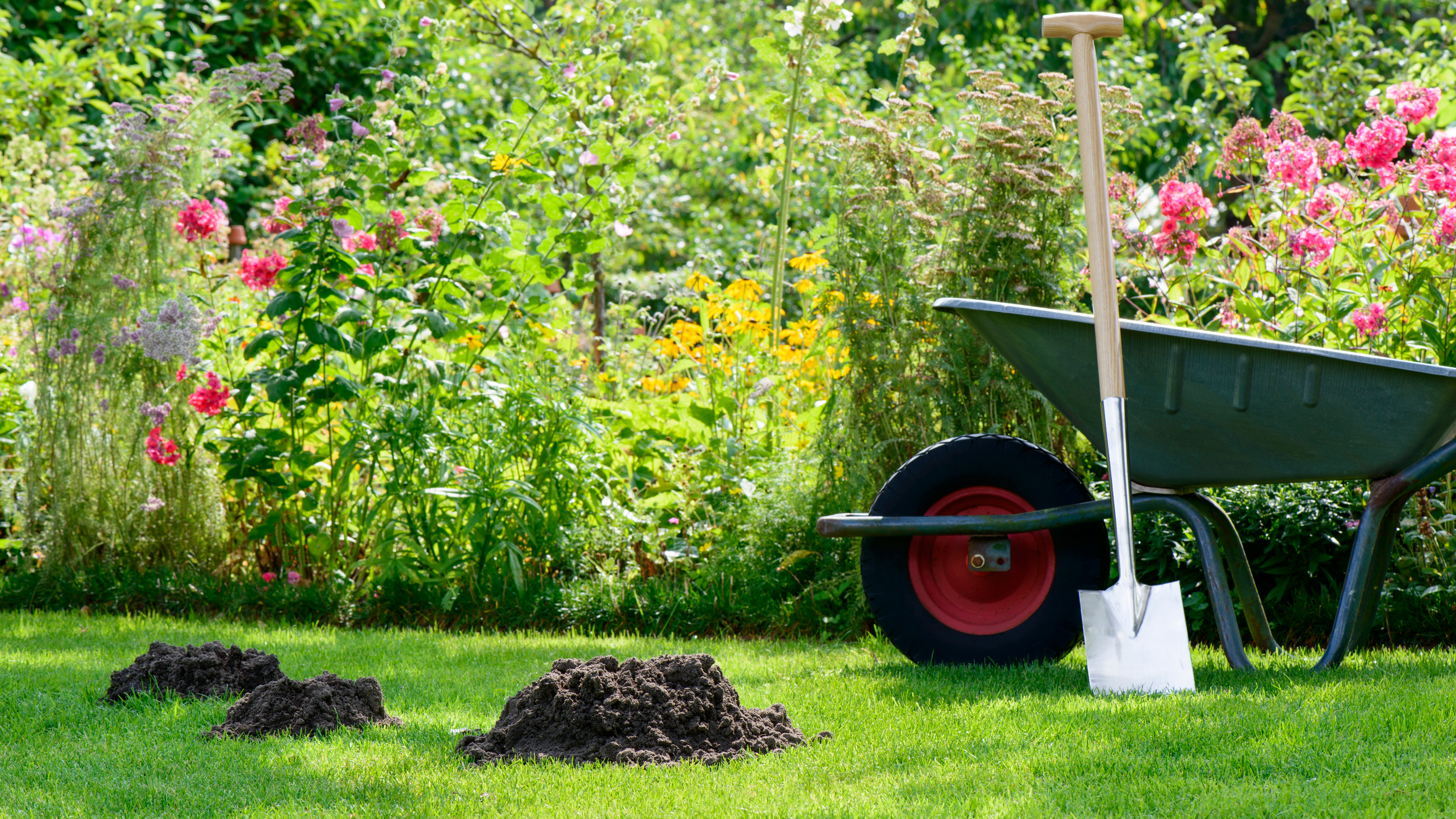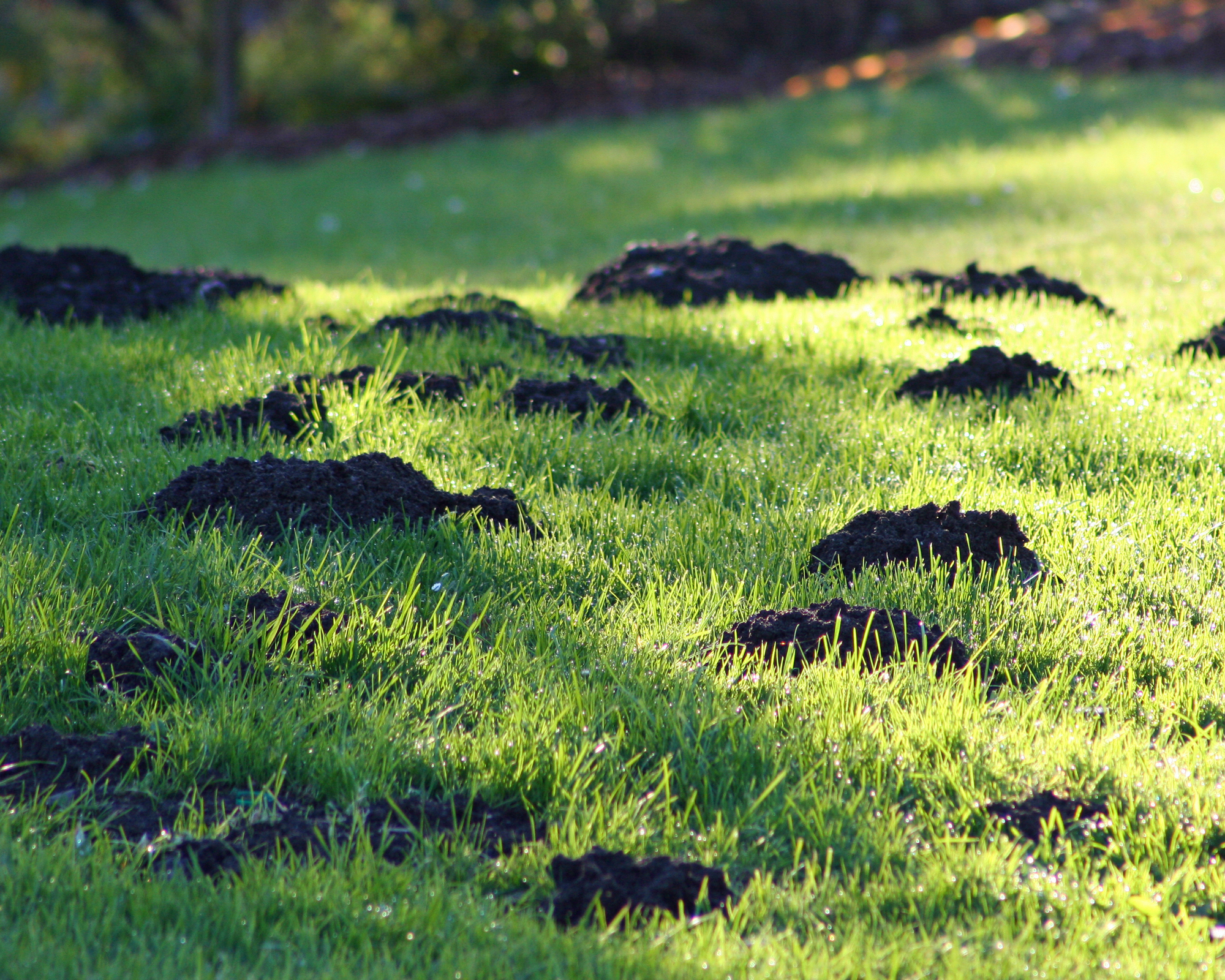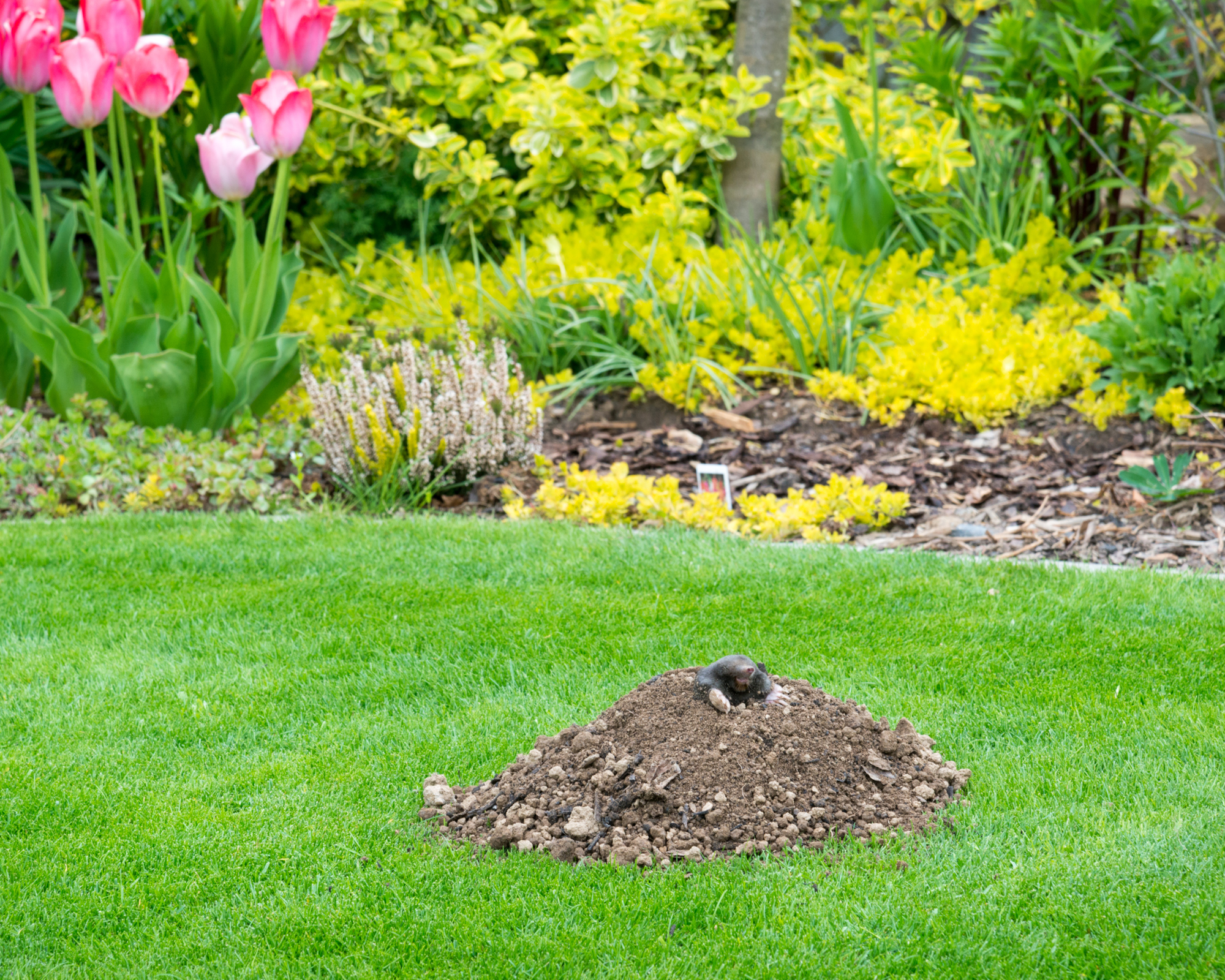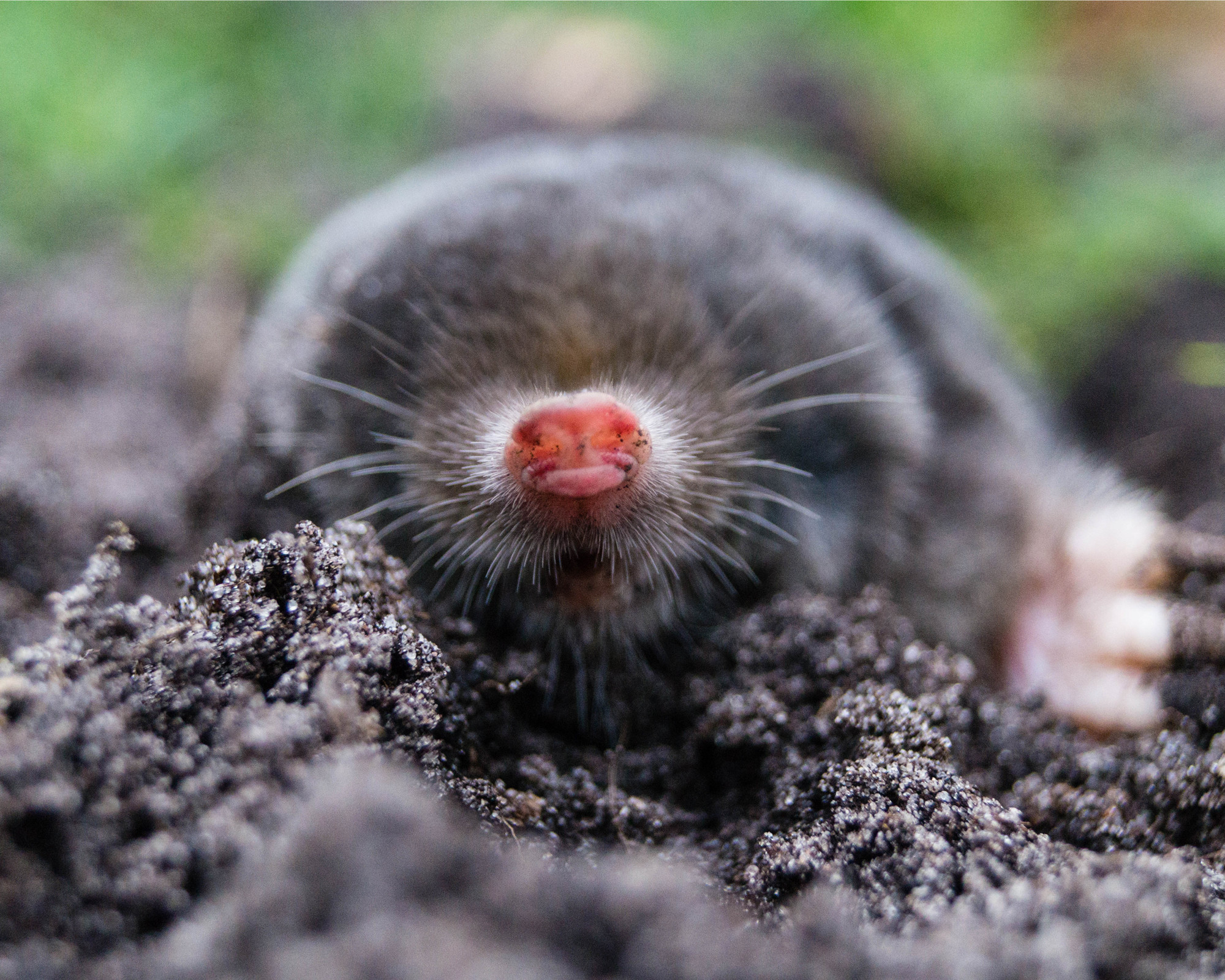How to get rid of moles on your lawn and yard
Follow this expert advice on how to get rid of moles to stop them from wreaking havoc on your lawn

Want to know how to get rid of moles in your lawn and yard? There's nothing like a molehill to ruin your perfectly trimmed lawn or garden bed. Moles are persistent animals, too, so it can be a real challenge to discourage them from your outdoor space.
Fortunately, you don't have to just give up on your backyard idea dreams– there are several tried and trusted ways to keep the creatures from burrowing right in the middle of your favorite summer bbq spot.
The best thing about these expert-led methods is that they are all humane and won't harm the moles. They just might convince them to burrow elsewhere.
How to get rid of moles
1. Remove food sources
Quite simply, moles want whatever food they can find in your yard. According to Jeremy Yamaguchi, the CEO of Lawn Love, 'moles are mainly looking for a source of food, and they love grubs, so if you remove grubs, they may be forced to take themselves elsewhere.'
The most common grubs in your lawn are the larvae of June bugs or Japanese beetles. They're bad news for your lawn, as much as moles are, so it's a good idea to try and reduce their numbers. You can try using neem oil from Amazon, or a specialist product – just be careful not to harm other wildlife and your plants with harsh chemical use.
2. Plant marigolds
Yamaguchi recommends 'planting marigolds around the border of your garden or throughout your yard' – 'marigolds are non-toxic flowers for moles so they won’t cause harm, but moles certainly don’t like them.' Marigolds are generally great plants in your yard, they're great to plant near roses and carrots as a pest-repellent option.
Marigolds are some of the best low-maintenance plants for your backyard and are great for beginner gardening.
Get small space home decor ideas, celeb inspiration, DIY tips and more, straight to your inbox!

3. Use castor oil as a repellent
If marigolds aren't doing much to protect your lawn and yard, you may try a stronger repellent. Ben Stark, who is the founder of Happy DIY Home, recommends the following DIY repellent recipe:
- Mix three parts castor oil (availablefrom Amazon), to one part dish soap
- Take four tablespoons of this mixture and put it into a gallon of water
- Soak the tunnel entrances and tunnels around your yard
This mixture will not seriously harm the moles, 'but it'll cause mild digestive upset that can encourage them to leave.' It's perhaps not the kindest way to banish moles from your yard, but if you have a serious and persistent problem with them it may become necessary.

4. Keep the area under your bird feeder clean
As with so many pest problems, prevention is better than cure, so avoiding anything that could attract moles to your yard is always the best strategy. Tammy Poppy, from OnTheFeeder.com, points out that keeping the area under any bird feeders you may have is one the ways to keep moles away – 'birds commonly toss bird seeds off the feeders while they’re choosing which seeds to eat. While at the feeder birds commonly leave droppings as well. These activities attract moles, indirectly.'
According to Metro Mole Control, experts in mole control, moles do not eat the birdseed but the seed and bird droppings will foster other sources of underground food.
Because of this, if you have bird feeders in your yard, you have 'two choices' – 'Either take down the bird feeders or commit to keeping the area under the feeders free of seeds and droppings. The easiest way to accomplish this is to regularly vacuum it up. A small shop vac works great!'

5. Keep the lawn and yard tidy
Proper yard maintenance and lawn maintenance are essential for keeping moles away. Learning how to mow a lawn regularly will go a long way to creating a mole-free environment, according to Noah James, owner of landscaping company Liberty Lawn Maintenance. 'By keeping your yard neat and tidy you will inevitably eliminate places for them to hide', he says. Try not to let your garden borders get overgrown, either. Most animals prefer overgrown, undisturbed backyards, so just by regularly maintaining yours you'll make it less attractive to them.
It's also important to 'keep an eye on watering. Too much water in the lawn and garden creates the perfect soil conditions to attract moles.'
6. Build a barrier
James recommends building a barrier, which will 'make it difficult for a mole to enter your yard. The way to do this is by digging a trench 'around any area of your yard that you'd like to protect. The trench should be at least 1–2 ft deep and about 6–8 inches wide. Then fill the trench with materials such as rocks or mesh.'
Obviously, you have to balance the effectiveness of this method with the fact that it will disrupt your garden design scheme, but it may be worth it at least temporarily, until moles have learned to avoid your yard.
7. Use sonic spikes
Working in much the same way as sonic mouse repellants, sonic spikes will 'send out pulses that are bothersome to the moles but not to people.' It's very easy to install them by simply inserting in the ground; sonic spikes can be bought on Amazon. This method is a bit hit-and-miss as some moles seem to simply ignore the unpleasant sound after a while, but it's worth a try, especially if you only have a mild mole issue. It could prevent new moles moving in in the first place.
What is the fastest way to get rid of moles in your yard?
In the first instance, the fastest way to get rid of moles in your yard is by either building a physical barrier or using a strong repellent such as the sonic spikes method.
However, these methods may prove to be inefficient over the longer term. The best way to get rid of moles isn't necessarily the fastest and may involve you combining different methods, including removing sources of food and planting plants moles dislike. This will take time but ultimately will give you better results.
Why are there moles in my yard?
One word: food. Moles primarily dig in yards that have plenty of insects they like to eat, which include grubs, worms, and ants. While you don't want to get rid of earthworms (they're beneficial to soil and your plants), it's a very good idea to tackle beetle grubs and ant heaps in your yard. You should also try to make your backyard more wildlife-friendly. This may sound paradoxical, but the more birds are attracted to your yard, so the greater the competition for food and the fewer insects there will be for the moles to eat.
Anna is a professional writer with many years of experience. She has a passion for contemporary home decor and gardening. She covers a range of topics, from practical advice to interior and garden design.